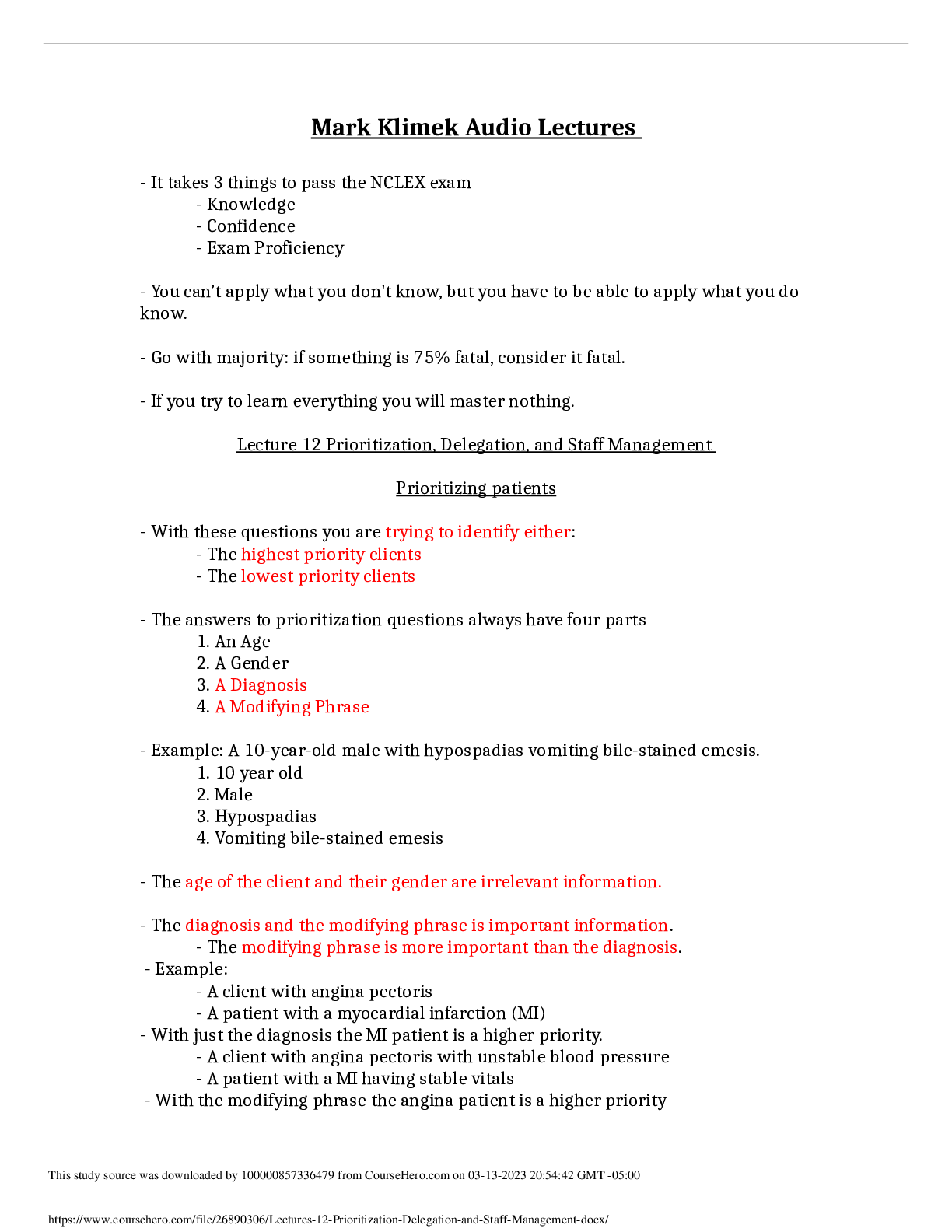CHAPTER 38 OXYGENATION & PERFUSION NCLEX QUESTIONS CORRECT ANSWERS
Document Content and Description Below
A nurse caring for a patient with chronic obstructive pulmonary disease (COPD) knows that hypoxia may occur in patients with respiratory problems. What are signs of this serious condition? Select all ... answers that apply. a. Dyspnea b. Hypotension c. Small pulse pressure d. Decreased respiratory rate e. Pallor f. Increased pulse rate Correct Answer a, c, e, f. If a problem exists in ventilation, respiration, or perfusion, hypoxia may occur. Hypoxia is a condition in which an inadequate amount of oxygen is available to cells. The most common symptoms of hypoxia are dyspnea (difficulty breathing), an elevated blood pressure with a small pulse pressure, increased respiratory and pulse rates, pallor, and cyanosis. A nurse is suctioning the nasopharyngeal airway of a patient to maintain a patent airway. For which condition would the nurse anticipate the need for a nasal trumpet? a. The patient vomits during suctioning. b. The secretions appear to be stomach contents. c. The catheter touches an unsterile surface. d. Epistaxis is noted with continued suctioning. Correct Answer. d. When epistaxis is noted with continued suctioning, the nurse should notify the physician and anticipate the need for a nasal trumpet. The nasal trumpet will protect the nasal mucosa from further trauma related to suctioning. A nurse is inserting an oropharyngeal airway for a patient who vomits when it is inserted. Which action would be the first that should be taken by the nurse related to this occurrence? a. Quickly position the patient on his or her side. b. Put on disposable gloves and remove the oral airway. c. Check that the airway is the appropriate size for the patient. d. Put on sterile gloves and suction the airway. Correct Answer a. When a patient vomits upon insertion of an oropharyngeal airway, the nurse should immediately position the patient on his or her side to prevent aspiration, remove the oral airway, and suction the mouth if needed. A nurse is choosing a catheter to use to suction a patient's endotracheal tube via an open system. On which variable would the nurse base the size of the catheter to use? a. The age of the patient b. The size of the endotracheal tube [Show More]
Last updated: 3 years ago
Preview 1 out of 5 pages

Buy this document to get the full access instantly
Instant Download Access after purchase
Buy NowInstant download
We Accept:

Reviews( 0 )
$7.00
Can't find what you want? Try our AI powered Search
Document information
Connected school, study & course
About the document
Uploaded On
Dec 14, 2022
Number of pages
5
Written in
All
Additional information
This document has been written for:
Uploaded
Dec 14, 2022
Downloads
0
Views
100

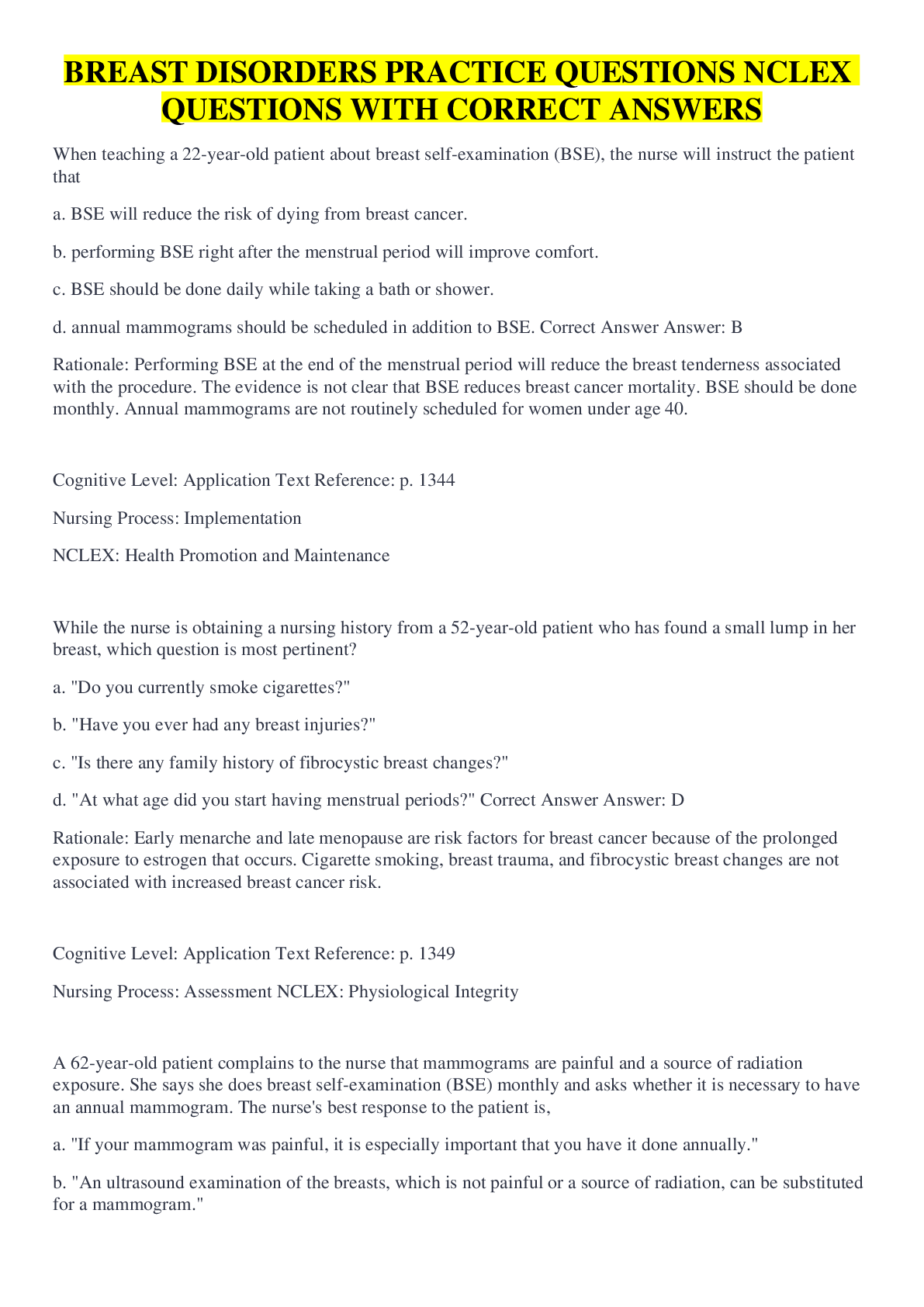




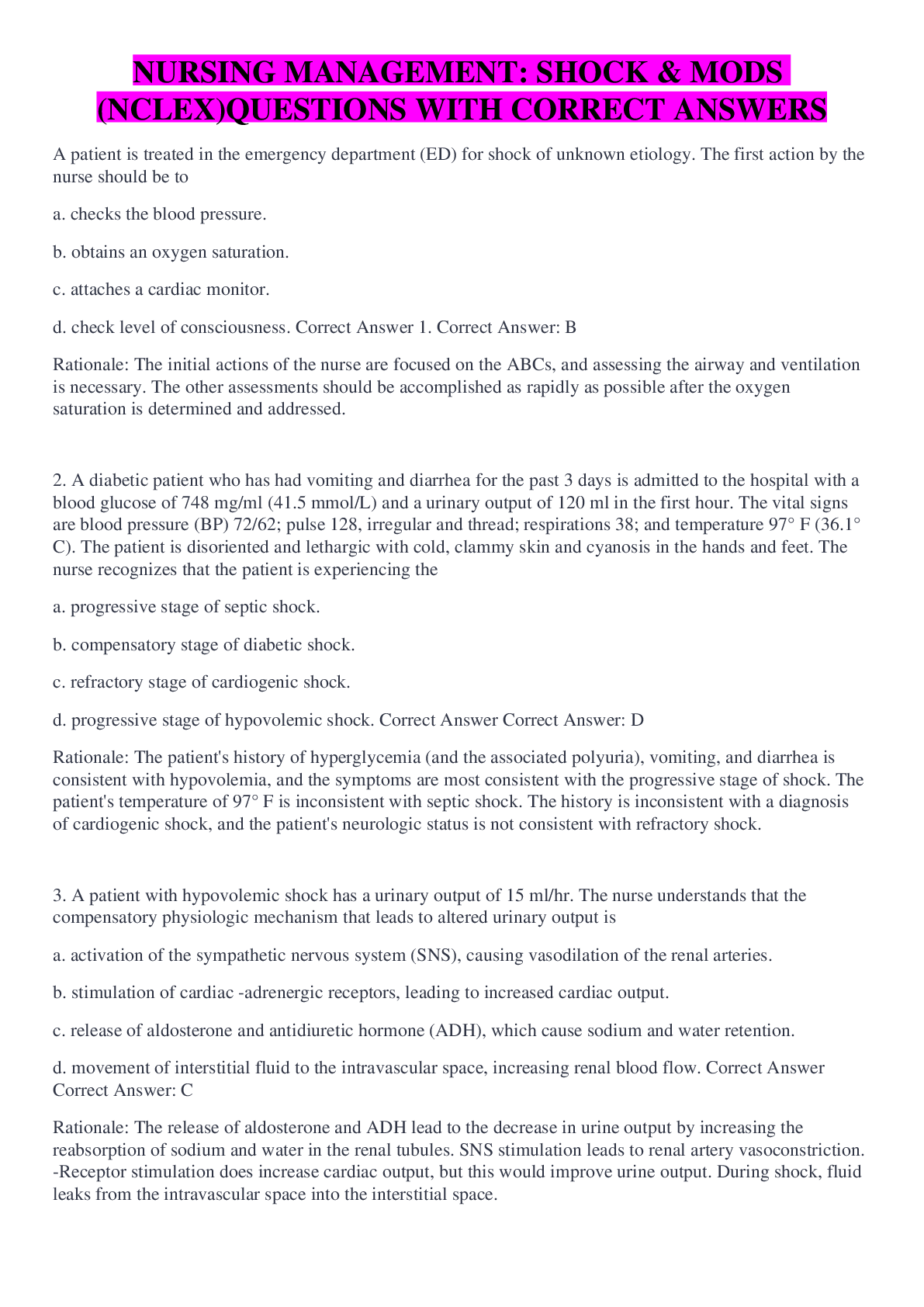
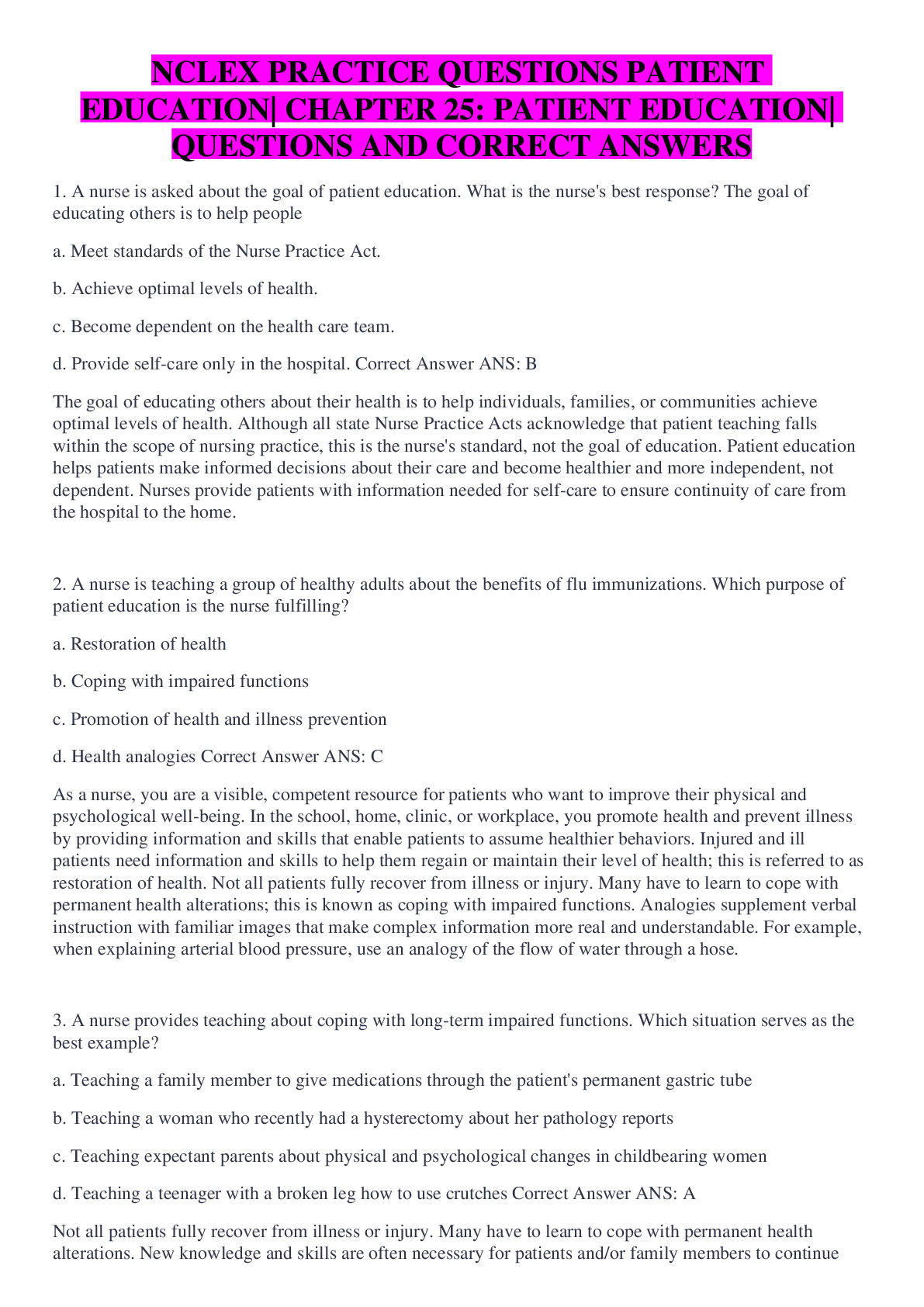

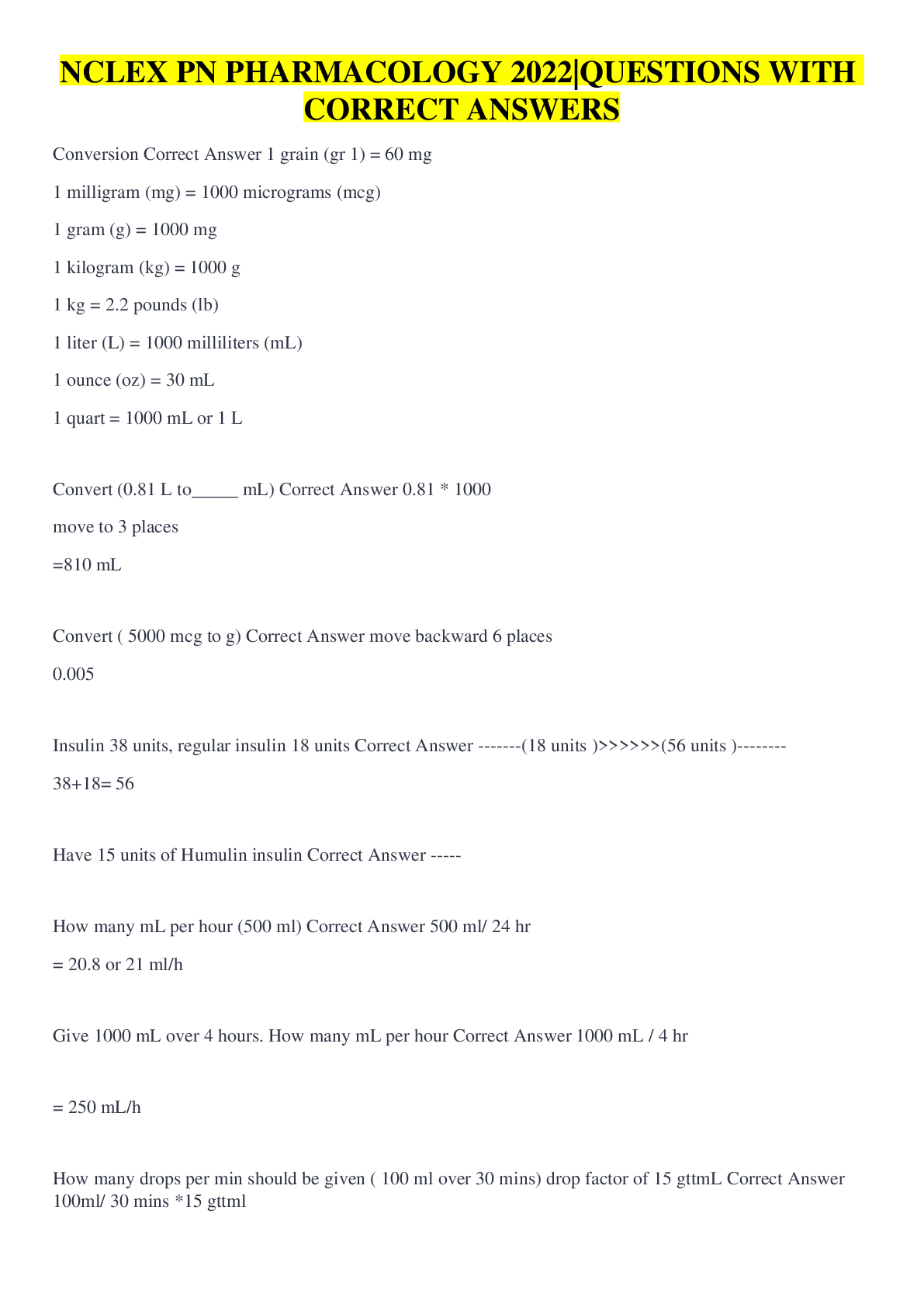
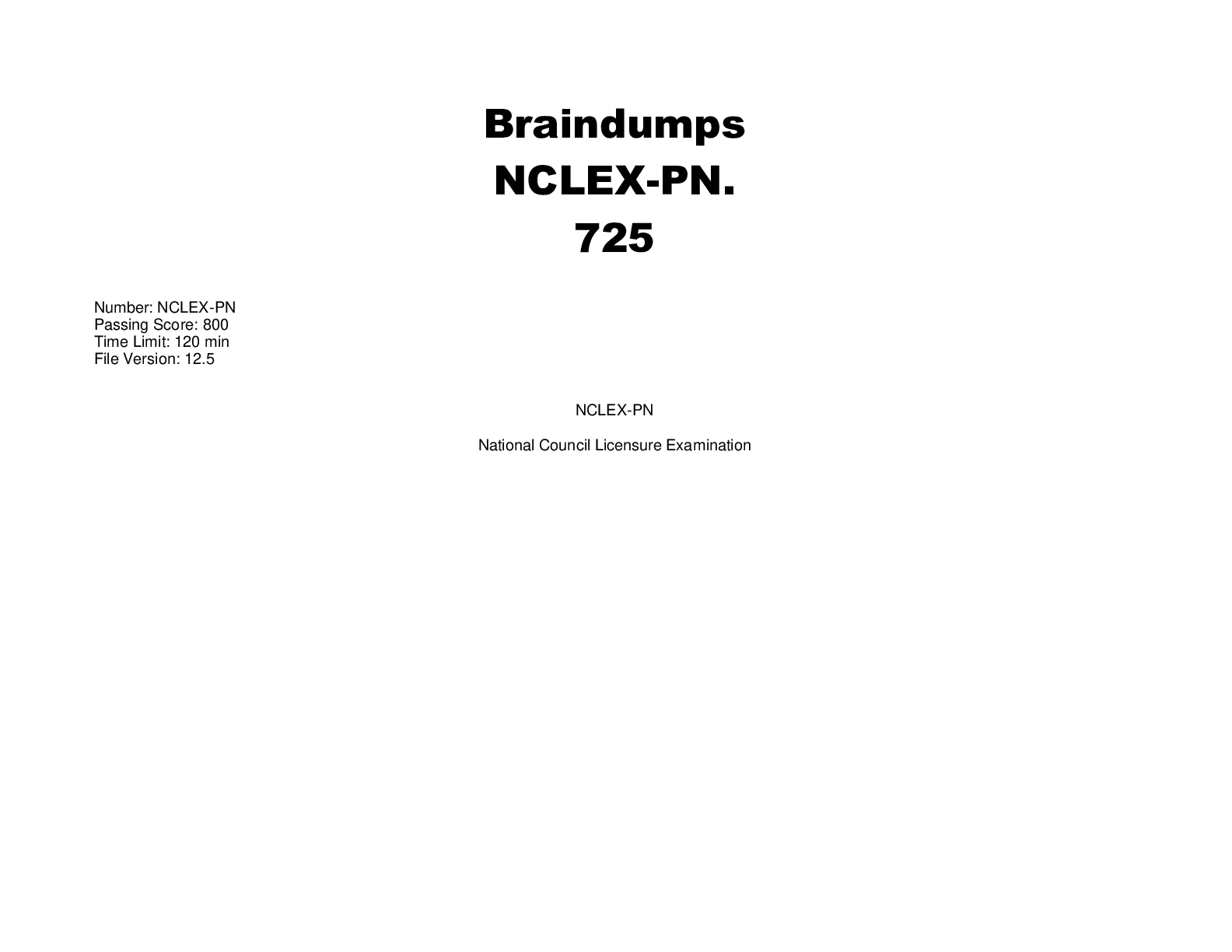

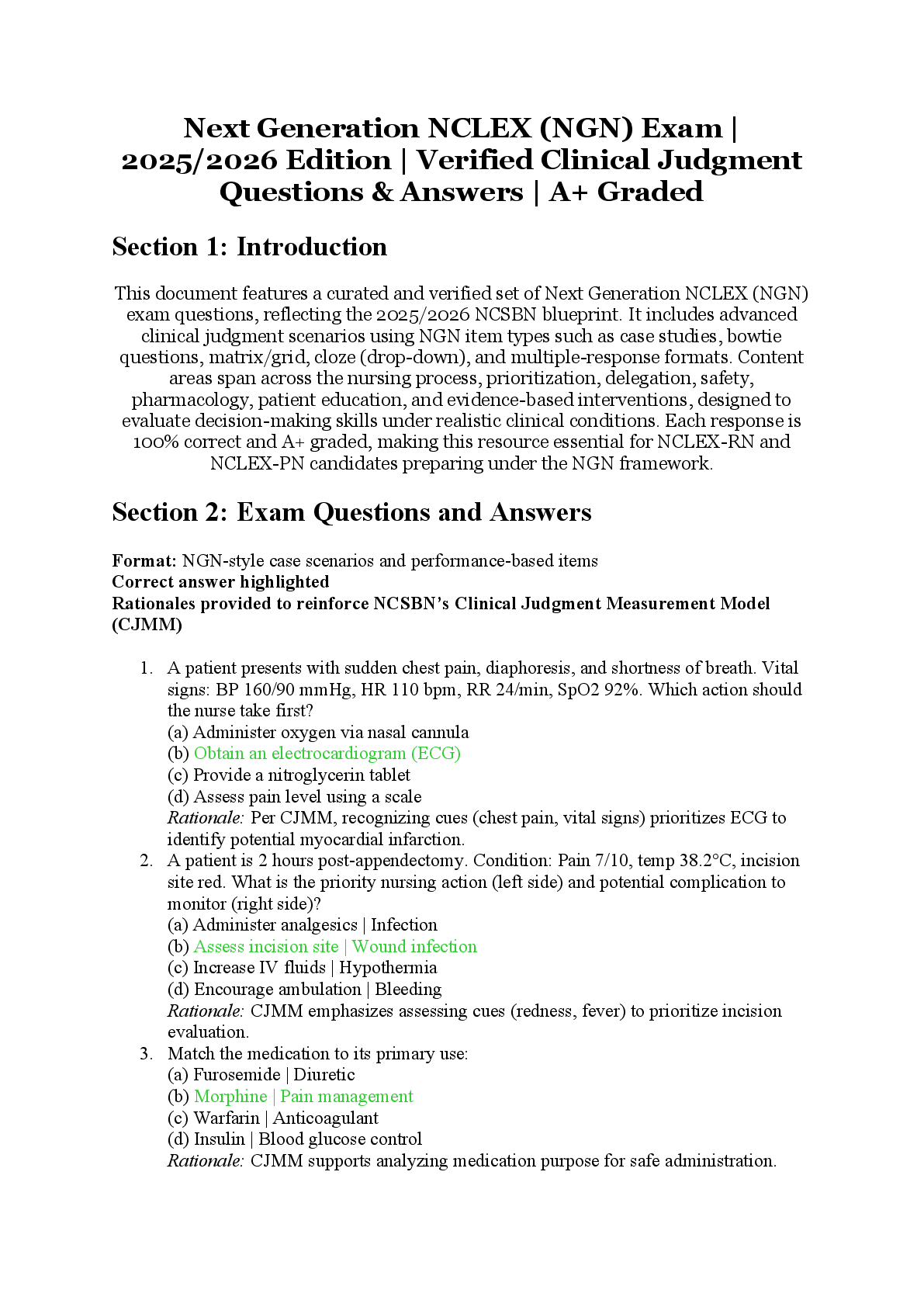
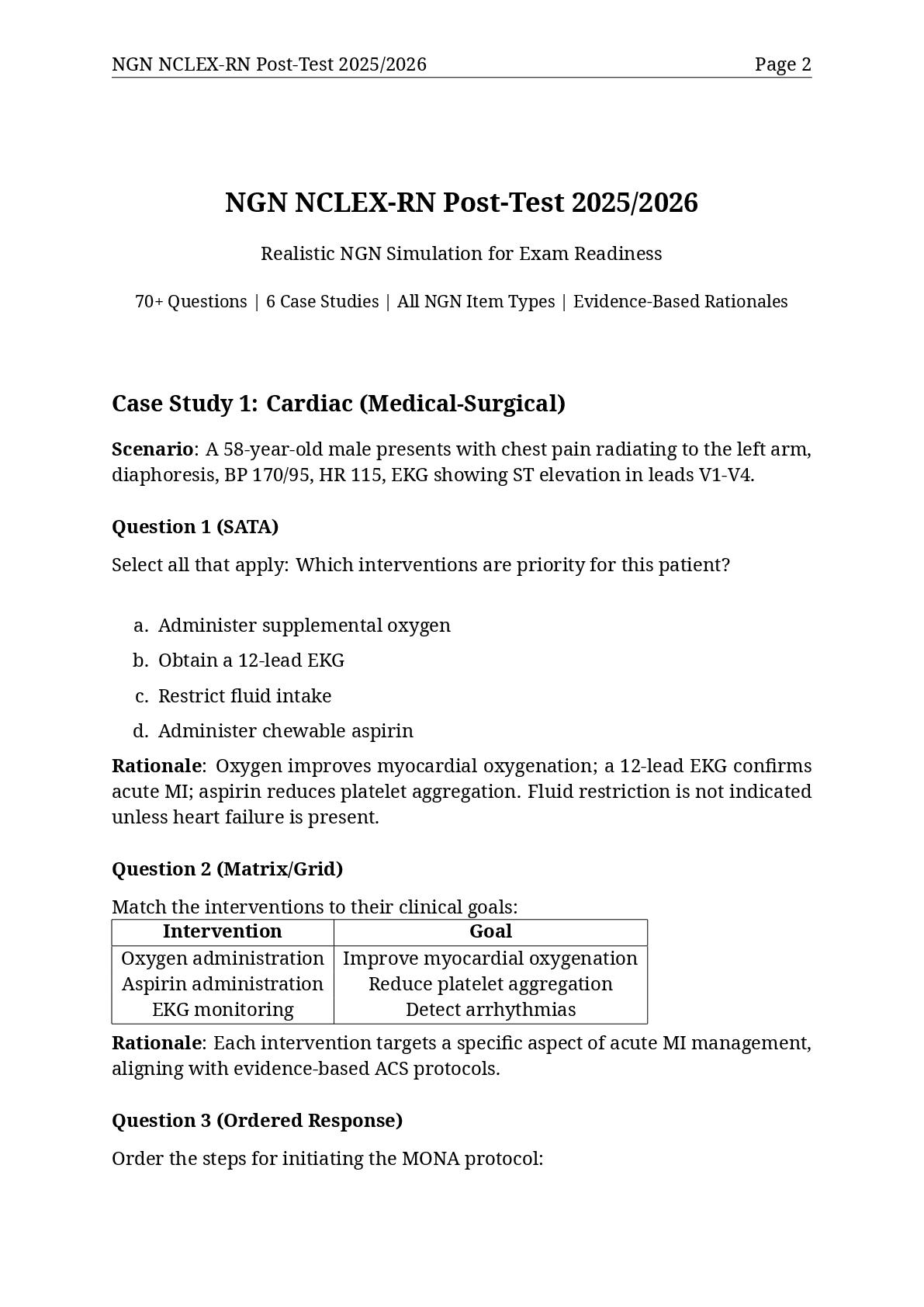
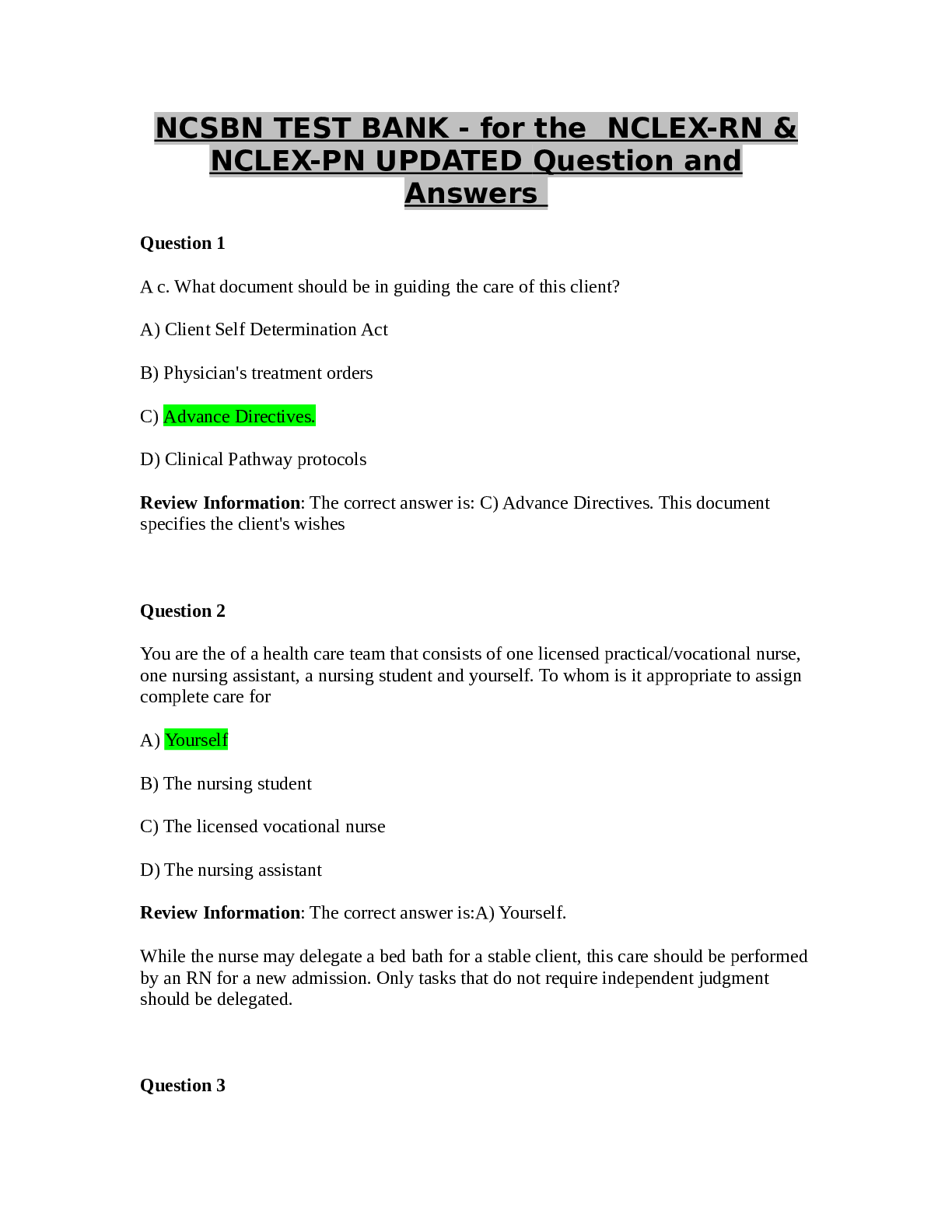
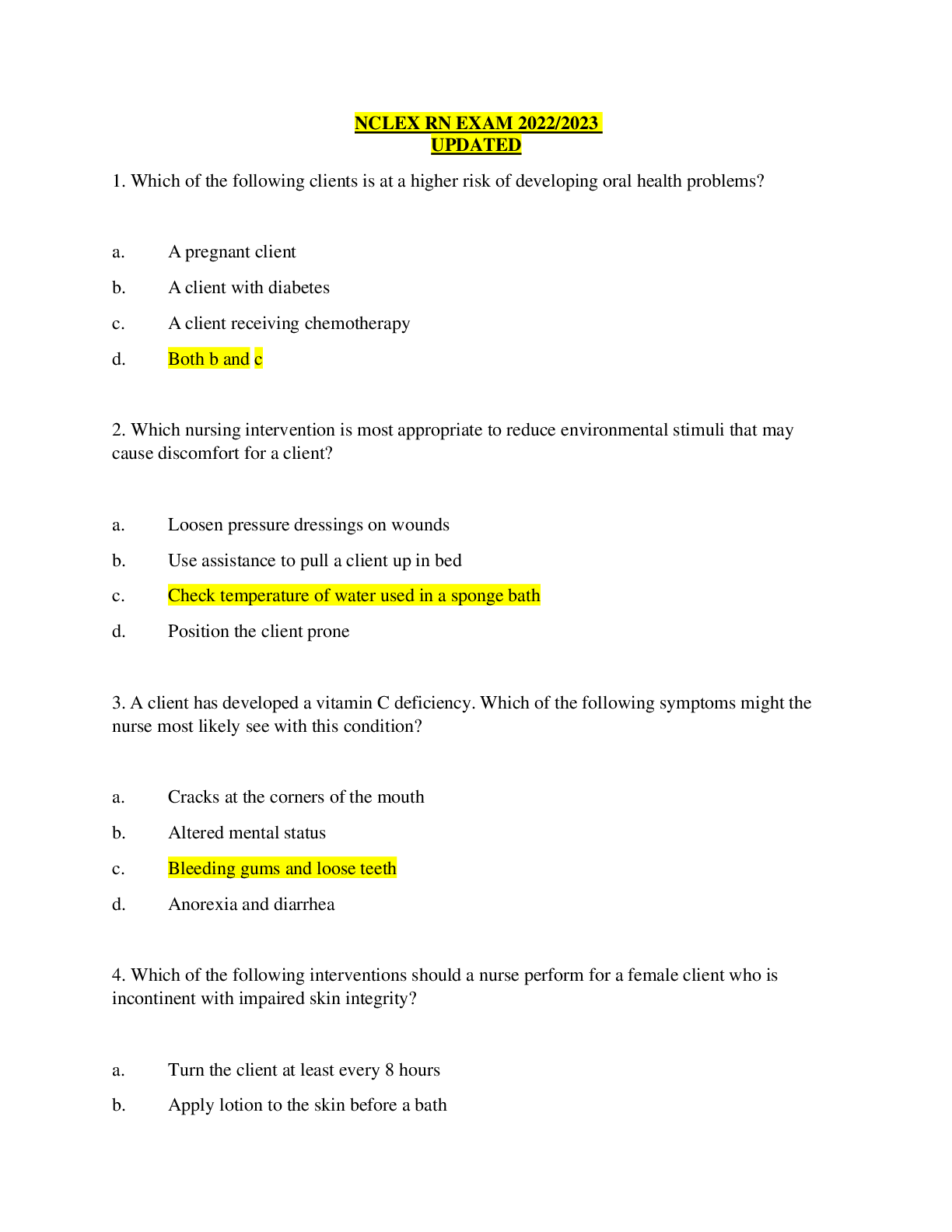
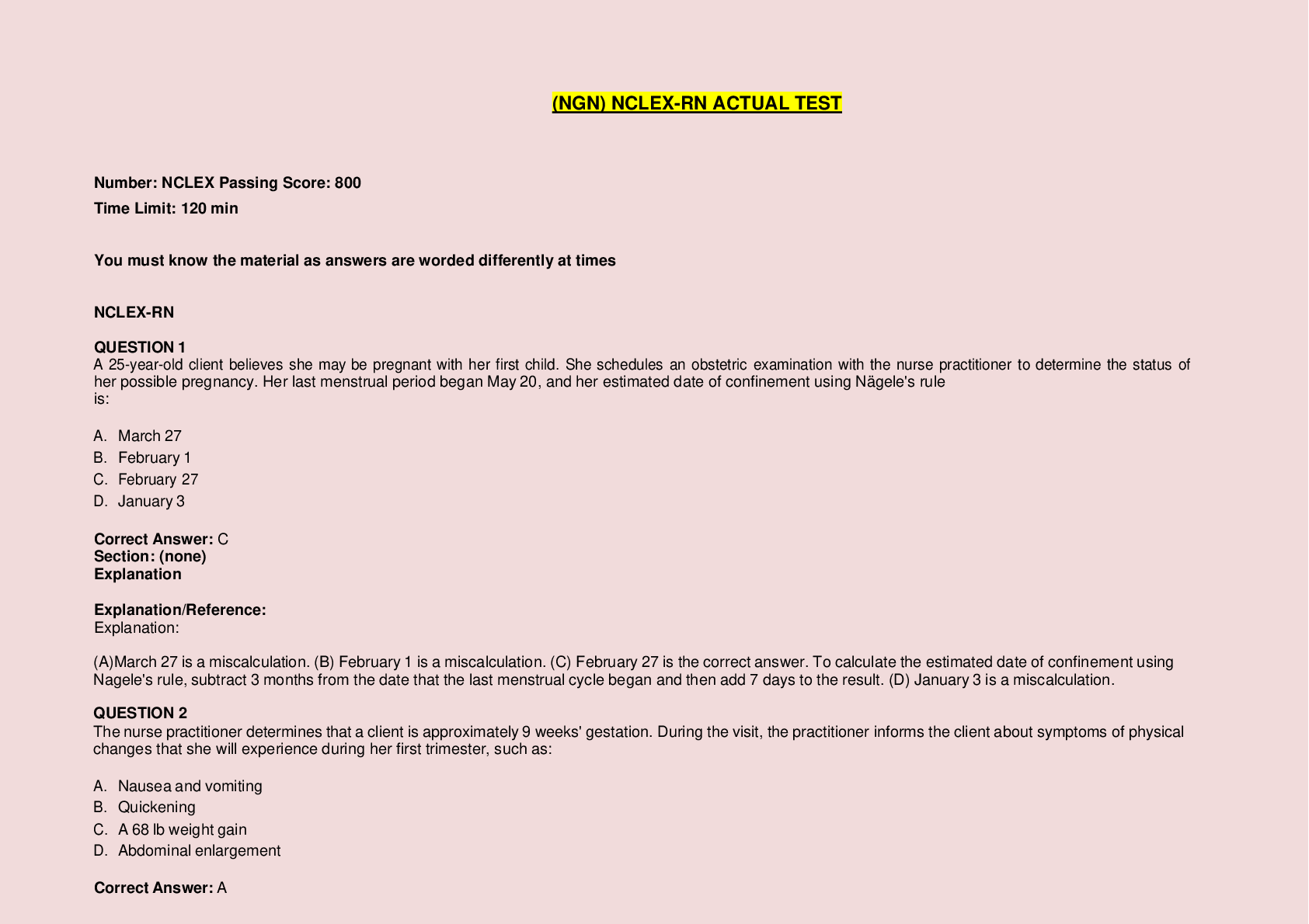
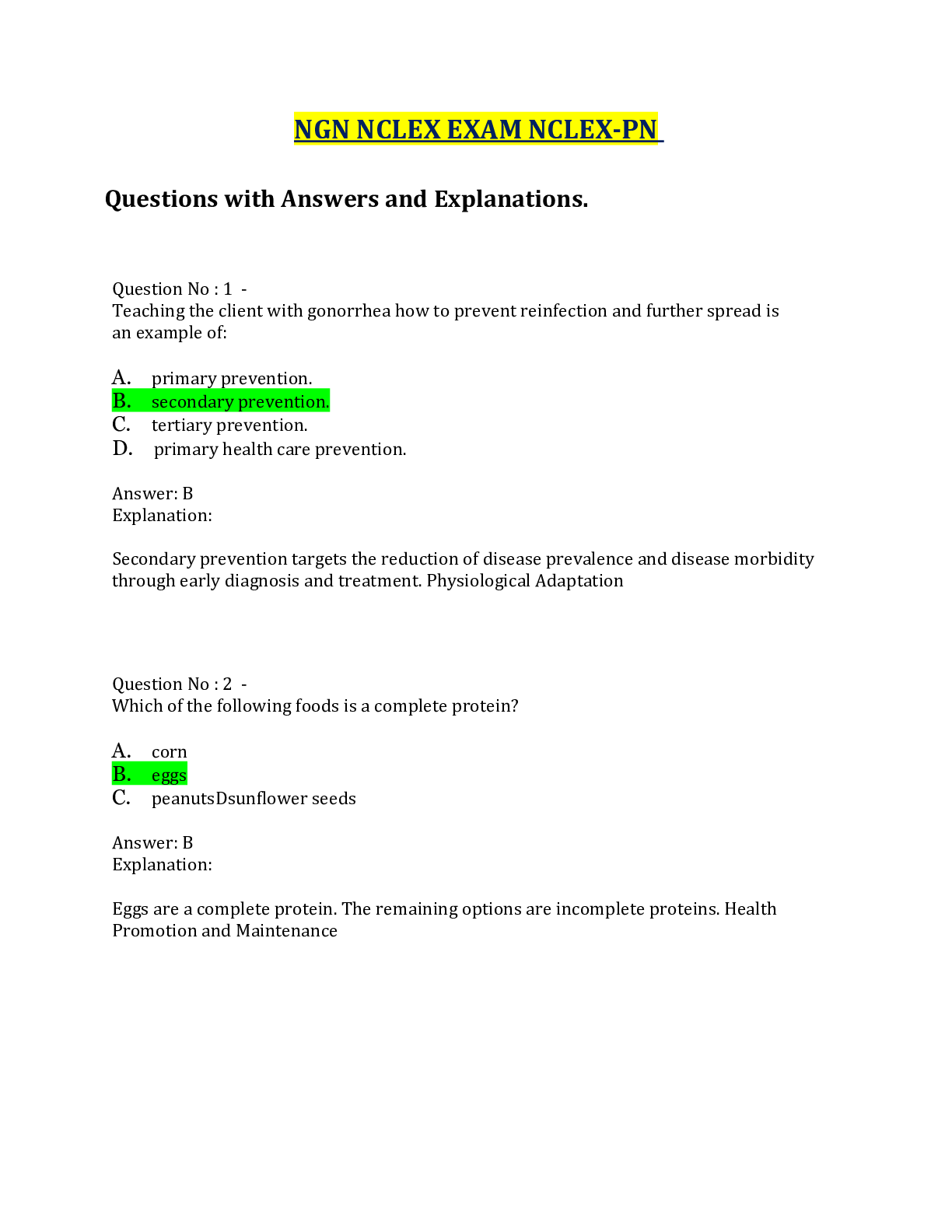

 JN21.png)
